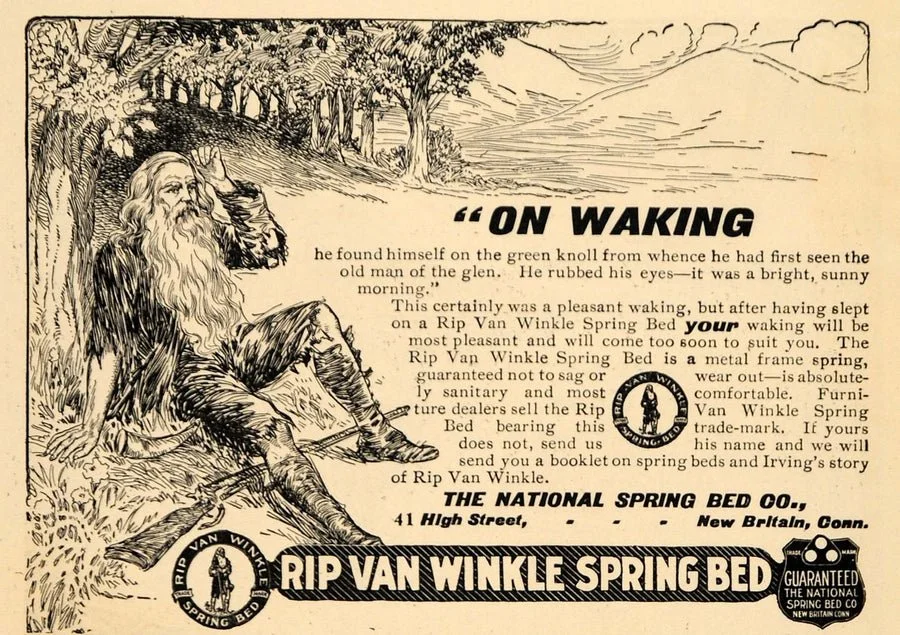National Spring Bed Co. Burns… Again!
The High Street commercial building complex caught fire Tuesday, May 7, 2024. Photo courtesy of NBC Connecticut.
As many of you know, there was a massive fire Tuesday night on the corner of Columbus and High Street. Popularly known as the Polar Building today, and remembered variously as the location of Superior Ball Bearing, Connecticut Photo Engraving Company, and more, the industrial complex was actually the site of the original Stanley Works Building, constructed pre-1869. That building was later demolished and rebuilt as the Nat’l Spring Bed Co. According to an 1869 map of New Britain, the Stanley family not only owned the factory building, but owned and lived in several residences on this block.
After the demolition of the Stanley Works building, the National Spring Bed Co. was organized in 1898. It was re-established out of the failed National Wire Mattress Company (organized in 1872), at which time they undertook construction on a new factory building. The three-story block currently fronting on Columbus Boulevard was completed around 1900, according to Preservation Connecticut, and by 1909, an additional four-story block had been constructed to the west of the ca. 1898 building. The company continued to expand throughout the 1910s, building a second addition of five stories and 20,000 square feet to the complex in 1911 and giving us the block of brick buildings we know today. In fact, their original wooden plant on Washington Street, at the time used for storage of materials, burned in a serious fire the day they moved into the new five-story building, causing $2000 in damage– nearly $66,000 in today’s money. "The fire could not have come at a more opportune time, if it had to take place, and will not interfere with the company's business one iota," the Courant reported, "The company was planning to move into the new plant today, so the fire does not put them back at all."
The National Spring Bed Company famously produced the ‘Rip Van Winkle Spring Bed’, using Washington Irving (of The Legend of Sleepy Hollow fame)’s 1819 short story as a marketing scheme. “Guaranteed not to sag or wear out-- is absolutely sanitary and most comfortable”. Customers could send out for a printed, illustrated copy of the tale (the companion piece to the Legend of Sleepy Hollow) along with product information.
By the time of the First World War, however, the company ran into trouble. Having been deemed “non-essential” to the war efforts and subsequently denied the rations of coal and steel that they needed to continue production, stockholders of the National Spring Bed Co. chose to sell all of their stock holdings to Landers, Frary, & Clark Mfg. Co. in August of 1918. Landers, Frary, & Clark used the holdings and plant to expand their own wartime manufacturing operations.
A 1918 print ad in the Hartford Courant from Wise, Smith & Co., advertising a final stock sale of National Spring Bed Co.’s products.
Since then, there have been many occupants of the building. In 1950, the Morin Furniture company moved in, and other furniture and manufacturing businesses have come and gone. Notably, Superior Ball Bearing, Lemco Manufacturing, and the Connecticut Photo Engraving Company have all been residents of the building. Currently, it houses Polar Corporation, STAN Furniture, and SD Auto Electric. While the future of the complex is uncertain as the city cleans up the aftermath of the fire and the fire marshal investigates, its nearly hundred and twenty-five years of history are not forgotten.
Further Reading:
Camp, David Nelson, History of New Britain, with sketches of Farmington and Berlin, Connecticut. 1640-1889. 1889.
Preservation Connecticut, National Spring Bed Co., https://connecticutmills.org/
The Hartford Courant, 17 Dec., 1910
The Hartford Courant, 28 Dec., 1910
The Hartford Courant, 7 Aug., 1918
The Hartford Courant, 19 Sept., 1918





